Related Research Articles

Frank Jeffrey Edson Smart was an expatriate Australian painter known for his precisionist depictions of urban landscapes that are "full of private jokes and playful allusions".
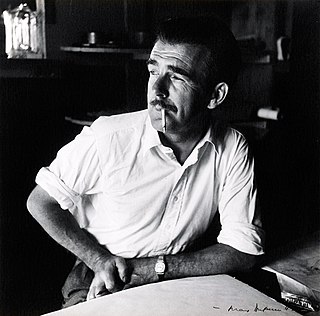
Sir William Dobell was an Australian portrait and landscape artist of the 20th century. Dobell won the Archibald Prize, Australia's premier award for portrait artists on three occasions. The Dobell Prize is named in his honour.
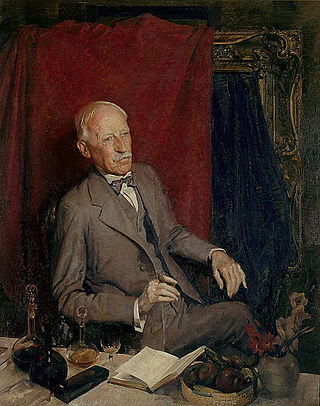
Julian Rossi Ashton was an English-born Australian artist and teacher. He is best known for founding the Julian Ashton Art School in Sydney and encouraging Australian painters to capture local life and scenery en plein air, greatly influencing the impressionist Heidelberg School movement.
Janet Dawson MBE is an Australian artist who was a pioneer of abstract painting in Australia in the 1960s, having been introduced to abstraction during studies in England while she lived in Europe 1957–1960 She was also an accomplished lithographic printer of her own works as well as those of other renowned Australian artists, a theatre-set and furniture designer. She studied in England and Italy on scholarships before returning to Australia in 1960. She won the Art Gallery of New South Wales Archibald Prize in 1973 with the portrait of her husband, Michael Boddy Reading. She has exhibited across Australia and overseas, and her work is held in major Australian and English collections. In 1977 she was awarded an MBE for services to art.

The Athenaeum or Melbourne Athenaeum at 188 Collins Street is an art and cultural hub in the central business district of Melbourne, Victoria, Australia. Founded in 1839, it is the city's oldest cultural institution.

Peter Benjamin Graham was an Australian visual artist, printer, and art theorist.
George Feather Lawrence (1901–1981) was born in Sydney, Australia and for many years was regarded as one of the foremost painters in the impressionist style. He studied under Julian Rossi Ashton at the famous Sydney Art School in the old Queen Victoria Building; and later in London and Paris.
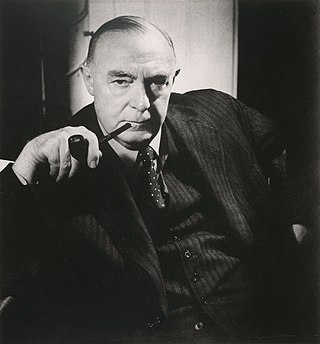
Sydney George Ure Smith OBE was an Australian arts publisher, artist and promoter who "did more than any other Australian to publicize Australian art at home and overseas".
Roland Wakelin was a New Zealand-born Australian painter and teacher.

Michael Kmit was a Ukrainian painter who spent twenty-five years in Australia. He is notable for introducing a neo-Byzantine style of painting to Australia, and winning a number of major Australian art prizes including the Blake Prize (1952) and the Sulman Prize. In 1969 the Australian artist and art critic James Gleeson described Kmit as "one of the most sumptuous colourists of our time".

Constance Stokes was an Australian modernist painter who worked in Victoria. She trained at the National Gallery of Victoria Art School until 1929, winning a scholarship to continue her study at London's Royal Academy of Arts. Although Stokes painted few works in the 1930s, her paintings and drawings were exhibited from the 1940s onwards. She was one of only two women, and two Victorians, included in a major exhibition of twelve Australian artists that travelled to Canada, the United Kingdom and Italy in the early 1950s.
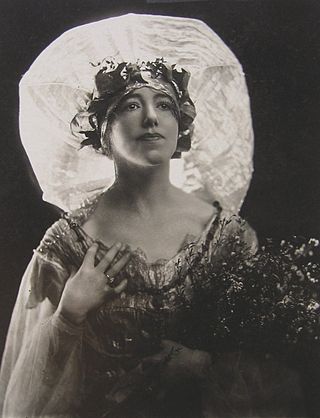
Hilda Rix Nicholas was an Australian artist. Born in the Victorian city of Ballarat, she studied under a leading Australian Impressionist, Frederick McCubbin, at the National Gallery of Victoria Art School from 1902 to 1905 and was an early member of the Melbourne Society of Women Painters and Sculptors. Following the death of her father in 1907, Rix, her only sibling Elsie and her mother travelled to Europe where she undertook further study, first in London and then Paris. Her teachers during the period included John Hassall, Richard Emil Miller and Théophile Steinlen.
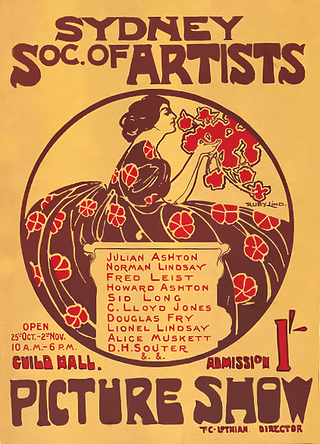
The Society of Artists was an influential Sydney based group of progressive artists who staged annual exhibitions from 1895 to the 1960s. The Society included many of Australia's best artists of the time. It lapsed during the mid 1960s.

Jean Bellette was an Australian artist. Born in Tasmania, she was educated in Hobart and at Julian Ashton's art school in Sydney, where one of her teachers was Thea Proctor. In London she studied under painters Bernard Meninsky and Mark Gertler.
Lucy Culliton is an Australian artist, based in Hartley. She is known for her paintings of landscapes and still life.

Dora Lynnell Wilson was a British-born Australian artist, best known in her adopted country of Australia for her etchings and street scenes.

Polly Hurry, was an Australian painter. She was a founding member of the Australian Tonalist movement and part of the Twenty Melbourne Painters Society.
Dorothy Kate Stoner was an Australian artist and teacher. She was known for her pastels and modernistic paintings.
Elaine E. Coghlan (1897–1989) was a Sydney-based painter, print-maker and art teacher, one of the later impressionist landscape artists active in the 1920s and 1930s.

Norah Gurdon was an Australian artist. Her first name is often misspelled Nora in many articles reviewing her work.
References
- ↑ Max Germaine (1979). Artists and Galleries of Australia and New Zealand. Lansdowne Editions. p. 419.
- ↑ Mark McGinness (9 February 2010). "Portrait of the critic in the artist". The Sydney Morning Herald . Archived from the original on 15 December 2023.